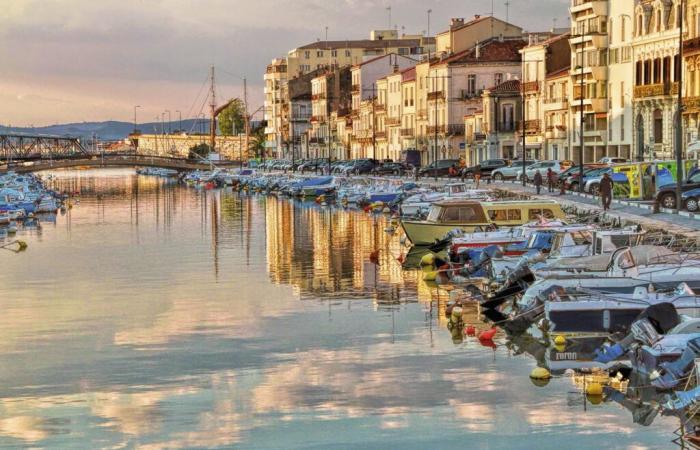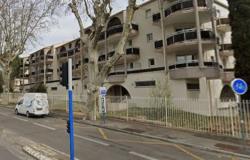The late season is longer on the Mediterranean side, a bit as if summer had difficulty giving way to autumn, thus extending, far into the new season, a more mild climate than elsewhere and the sweetness of living there. This is the opportunity to take the opportunity to visit the pretty town of Sète, even if only for a weekend. Walks, the great outdoors, visits but also memories will guide our steps today.
Whether you arrive by road or by train station, we find ourselves at 54, rue Georges-Brassens, formerly named rue de l’Hospice. Because visiting Sète is obviously remembering the singer-poet emblem of French song as well as the more than 200 texts that he bequeathed to us and whose refrains we often know by heart. Renamed in 1982, a year after the singer’s death, the little street has lost none of its old-world air.
City of Paul Valéry
The city, grateful to have loved her so much, also organized a whole walking tour for 8 euros on the places where the local child lives, near her first home, the square of her first steps and her first games (today Simone-Veil Park) at the Paul Valéry high school, where he was a student for around ten years, and to his pied-à-terre in Sète, at 5, quai Adolphe-Merle, opposite the quay where his boat, the Gyss, was moored, always ready to set sail with its captain at the helm. He must have kept in his heart all his life the poetry of the places of strolls of his childhood and his youth and this hint of singing accent specific to the people here.
It was therefore there, “a stone’s throw from the blue waves”, that he was born, on October 22, 1921, in this popular district of the port of Sète, before pursuing the artistic career that we know him to be. And it is in the Py cemetery, formerly called “the cemetery of the poor”, that he now rests in the family grave, although he would have preferred the Corniche beach, as he confided in a of his most famous songs, the famous “Beg to be buried on the beach of Sète”.
Founded by Louis XIV
Still guided by the poet, we are now heading towards the nearby Espace Georges-Brassens, a space that the city opened in 1992 at 67, boulevard Camille-Blanc, in memory of the immense artist. A memorial space designed not as a classic museum but as a place of images over 800 m2 and ten thematic rooms, entirely devoted to this freedom-loving poet-musician, to his work, to his artistic career, and of course to his “Friends first”.
Founded in 1666 by Louis XIV to provide a maritime opening to the Canal du Midi, Sète has always looked towards the sea, the one and only, the Mediterranean. Nicknamed the Venice of Languedoc, today it is a town of more than 43,000 inhabitants which reveals its history during a walk in its historic center, its seaside and its 12 km of fine sand beaches. It is therefore an ideal destination for family tourism but also green tourism. Along the Etang de Thau, there is no shortage of water activities between sea and forests and there are numerous walks. Dominating the port of Sète from its 33.50 meters height, the Saint-Louis lighthouse is one of choice: it offers a 360° panorama of the fishing port, the marina and the old town.
A tribute to Jean Vilar
After discovering one of the symbols of Sète and one of the most beautiful walks in the city, extend your walk along the corniche starting from the Théâtre de la Mer, also named Théâtre Jean-Vilar in homage to the famous actor and director also from Sète, creator of the Avignon Festival. An easy walk of around 2 kilometers to connect the heart of the city to the typical Corniche district.
A good way to end a busy day by watching the sun set into the sea, perhaps while sitting at one of the many beach restaurants. And if you are the sporty type and you haven’t had enough, there is still the Lido promenade, a greenway which extends over 12 kilometers between Sète and Marseillan, and which serves seven magnificent sandy beaches end which have largely contributed to making the reputation of the city.
Sète is full of both cultural and gourmet treasures. Between abundant cultural creations and diverse natural spaces, at some point it will also be time to think about settling down and discovering tasty local specialties that you will find in particular at the Halles, a daily market which invites all gourmands and gourmets to find good products from local producers. Or even taste them on site.
Reservations for the walk “From Petit Georges to Grand Brassens”, Sète tourist office (04 86 84 04 04). Duration 2 hours, approximately 2 km on foot with a slight elevation gain. Visit not suitable for strollers and wheelchairs. Dogs on a leash are accepted.
Two major exhibitions of Jean Hugo’s works are being held this fall, at the Fabre museum in Montpellier, until October 13, and at the Paul-Valéry museum in Sète until November 3.
In Sète, the exhibition “Jean Hugo, between heaven and earth” aims to show, through more than a hundred works, how, for Jean Hugo (1894-1984), the representation of nature is as much of the celebration of the order of the world than of a desire to make people feel what animates it. Inspired witness and enlightened ambassador of the beauty of this region where he chooses to live but also of the human soul always in search of becoming, Jean Hugo, whose works are today exhibited throughout the world, reveals to us an artistic universe both rich and deep. Obviously, his surname will not have failed to ring in your ears: Jean Hugo is the great-grandson of the famous French writer.
Two major exhibitions of Jean Hugo’s works are being held this fall, at the Fabre museum in Montpellier, until October 13, and at the Paul-Valéry museum in Sète until November 3.
In Sète, the exhibition “Jean Hugo, between heaven and earth” aims to show, through more than a hundred works, how, for Jean Hugo (1894-1984), the representation of nature is as much of the celebration of the order of the world than of a desire to make people feel what animates it. Inspired witness and enlightened ambassador of the beauty of this region where he chooses to live but also of the human soul always in search of becoming, Jean Hugo, whose works are today exhibited throughout the world, reveals to us an artistic universe both rich and deep. Obviously, his surname will not have failed to ring in your ears: Jean Hugo is the great-grandson of the famous French writer.
Two major exhibitions of Jean Hugo’s works are being held this fall, at the Fabre museum in Montpellier, until October 13, and at the Paul-Valéry museum in Sète until November 3.
In Sète, the exhibition “Jean Hugo, between heaven and earth” aims to show, through more than a hundred works, how, for Jean Hugo (1894-1984), the representation of nature is as much of the celebration of the order of the world than of a desire to make people feel what animates it. Inspired witness and enlightened ambassador of the beauty of this region where he chooses to live but also of the human soul always in search of becoming, Jean Hugo, whose works are today exhibited throughout the world, reveals to us an artistic universe both rich and deep. Obviously, his surname will not have failed to ring in your ears: Jean Hugo is the great-grandson of the famous French writer.
Before leaving, one last thing…
Unlike 90% of French media today, Humanity does not depend on large groups or billionaires. This means that:
- we bring you unbiased, uncompromising information. But also that
- we don’t have not the financial means that other media benefit from.
Independent and quality information has a cost. Pay it.
I want to know more






